Dean Keithly successfully passed his B exam on Friday 11/19. You can watch a recording of his talk here:
SIOSlab at the Roman Coronagraph Instrument Information Sessions
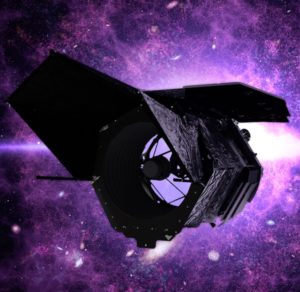 Several of us presented at the recent Roman Coronagraph Instrument Information Sessions, held virtually on October 26th and 28th. Slides and recordings of all talks are available here.
Several of us presented at the recent Roman Coronagraph Instrument Information Sessions, held virtually on October 26th and 28th. Slides and recordings of all talks are available here.
Also, check out the results of the Coronagraph Science Investigation Team at romancgi.sioslab.com
SIOSlab Contributes to the Decadal Survey
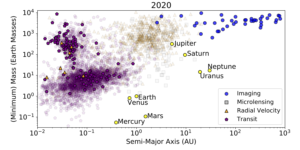
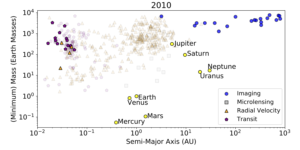
Last week, the National Academies released the Astro2020 decadal survey in Astronomy and Astrophysics: Pathways to Discovery in Astronomy and Astrophysics for the 2020s. SIOSlab is proud to have contributed to the survey, alongside many of our colleagues at Cornell.
Congratulations to Corey Spohn on Passing his A Exam!
Corey Spohn successfully passed his A exam, marking the entrance into the dissertation phase of his degree program. His public talk can be seen below.
JGCD Paper Published
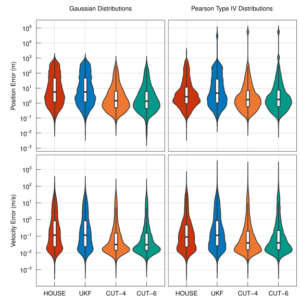 “Higher-Order Unscented Estimator” by Zvonimir Stojanovski and Dmitry Savransky has been published in the Journal of Guidance, Control and Dynamics. It is available here (open access). This paper introduces HOUSE, a new extension of the unscented Kalman (UKF) filter with asymmetric sample points and weights chosen to match third- and fourth-order moments in addition to the mean and covariance. Compared with the conventional UKF and conjugate unscented transform (CUT) filters, HOUSE is shown to be more robust to outliers in the process and measurement noise.
“Higher-Order Unscented Estimator” by Zvonimir Stojanovski and Dmitry Savransky has been published in the Journal of Guidance, Control and Dynamics. It is available here (open access). This paper introduces HOUSE, a new extension of the unscented Kalman (UKF) filter with asymmetric sample points and weights chosen to match third- and fourth-order moments in addition to the mean and covariance. Compared with the conventional UKF and conjugate unscented transform (CUT) filters, HOUSE is shown to be more robust to outliers in the process and measurement noise.
ApJL Paper Published
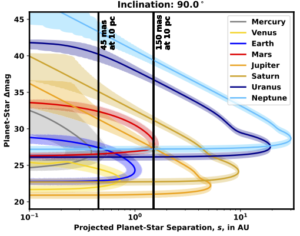 Our latest paper, Keithly & Savransky, “The Solar System as an Exosystem: Planet Confusion“, is now published in the Astrophysical Journal Letters. This work explores the idea of what we can learn about observing other planetary systems by thinking about external observers studying our own solar system, and the issues they might run into. The Cornell Chronicle has a great story summarizing the research (also carried at Phys.org).
Our latest paper, Keithly & Savransky, “The Solar System as an Exosystem: Planet Confusion“, is now published in the Astrophysical Journal Letters. This work explores the idea of what we can learn about observing other planetary systems by thinking about external observers studying our own solar system, and the issues they might run into. The Cornell Chronicle has a great story summarizing the research (also carried at Phys.org).
JATIS Paper Published
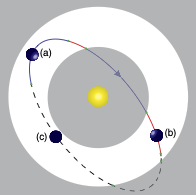 Our newest paper: Keithly, Savransky, and Spohn, “Integration Time Adjusted Completeness” is now available as open access in the Journal of Astronomical Telescopes, Instruments, and Systems. This paper updates the concept of completeness—the probability of detecting an exoplanet from some population with a specific instrument—to take into account the required integration time, showing that previous calculations of completeness have been overestimating these probabilities.
Our newest paper: Keithly, Savransky, and Spohn, “Integration Time Adjusted Completeness” is now available as open access in the Journal of Astronomical Telescopes, Instruments, and Systems. This paper updates the concept of completeness—the probability of detecting an exoplanet from some population with a specific instrument—to take into account the required integration time, showing that previous calculations of completeness have been overestimating these probabilities.
Autonomous Cross-Calibration for Imaging Satellites (ACCIS)
Presented by Zvonimir Stojanovski at the 2021 AAS/AIAA Astrodynamics Specialist Conference, August 11, 2021.
On Nutation Dampers
I’ve been teaching the theory of nutation dampers for years, and have finally gotten around to creating a good visualization of one. Nutation dampers are really neat devices for rejecting disturbances on spin-stabilized spacecraft. Essentially, a damper is any mechanical device with energy dissipation that is excited by spin about a transverse spacecraft axis. The dissipation mechanism causes the non-symmetry axis spin to diminish over time, and the spacecraft returns to pure symmetry axis spin. Physical implementations can range from spring-mass-damper systems to wheels mounted on a transverse spacecraft axis whose spin results in any sort of viscous damping. Here’s an animation of the latter sort. The spacecraft (blue cylinder) is a major-axis spinner, and experiences an angular impulse after five revolutions, which spins up the nutation damper (red wheel). Over time, the spacecraft settles back into pure symmetry axis spin.
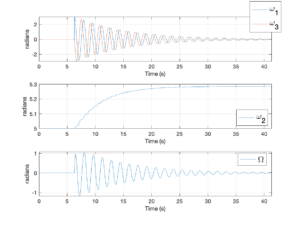 The plots show the time histories of the components of spacecraft angular velocity (\omega_2 is the spin about the symmetry axis) as well as the damper’s spin rate (\Omega).
The plots show the time histories of the components of spacecraft angular velocity (\omega_2 is the spin about the symmetry axis) as well as the damper’s spin rate (\Omega).
Animation code at: https://github.com/dsavransky/MAE4060/blob/main/Animations/nutation_damper_animation.m and a full derivation can be found at: https://nbviewer.jupyter.org/github/dsavransky/MAE4060/blob/main/Notebooks/Viscous%20Nutation%20Damper.ipynb
On Detecting Exoplanets
Here is a lecture I recently did on techniques for the detection of exoplanets:
A related video illustrating some of the methods:





